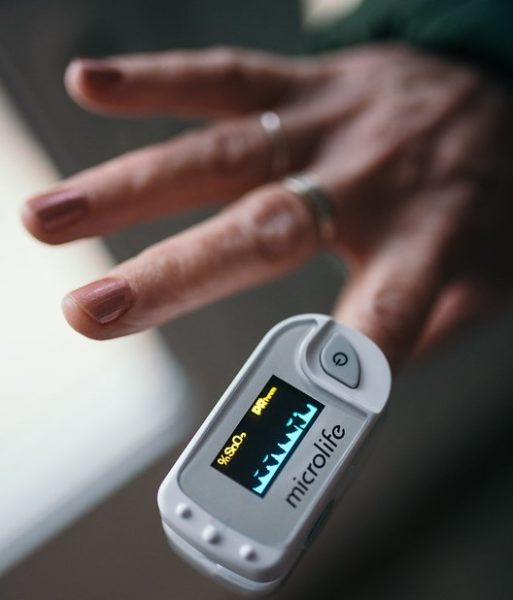
Reuters, NPR, and other news outlets report that African Americans, Hispanics, and Asians receive less supplemental oxygen when hospitalized because of a problem with a common medical instrument, the pulse oximeter. This instrument clips onto a finger, as shown in the picture to the left, and uses light to measure the amount of oxygen in the blood. That data is used to determine whether supplemental oxygen is necessary. Doctor and Researcher A. Ian Wong talks about the real life implications of this in his own experience with treating COVID-19 patients.
For its part, the US Food and Drug Administration (FDA) has cautioned that given the knowledge that skin pigmentation and other factors like using nail polish can affect pulse oximeter readings, those readings should be considered an estimate and that data trends rather than absolute readings should be used. Pulse oximeters were created in the 1970s and tested on mostly white populations. The FDA is also planning to convene a meeting later this year of its Medical Device Advisory committee to look into these issues and make further recommendations.
Some studies like this one (although a preprint not yet peer-reviewed) do not find much of an accuracy difference between Asian pulse oximeter readings and that for whites but do find a black/white difference. I would venture that since “Asian” as a category encompasses a huge range of skin tones (ranging from pale K-Pop stars to Mindy Kaling), some “Asian” samples in studies might not encompass that variety.
(photo credit: Nenad Stojkovic by CC by 2.0)








